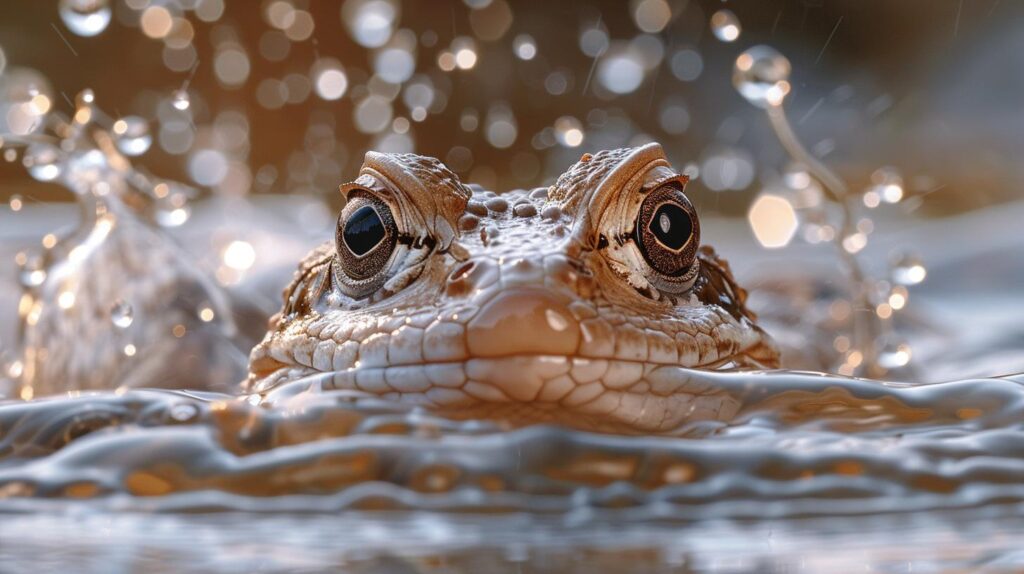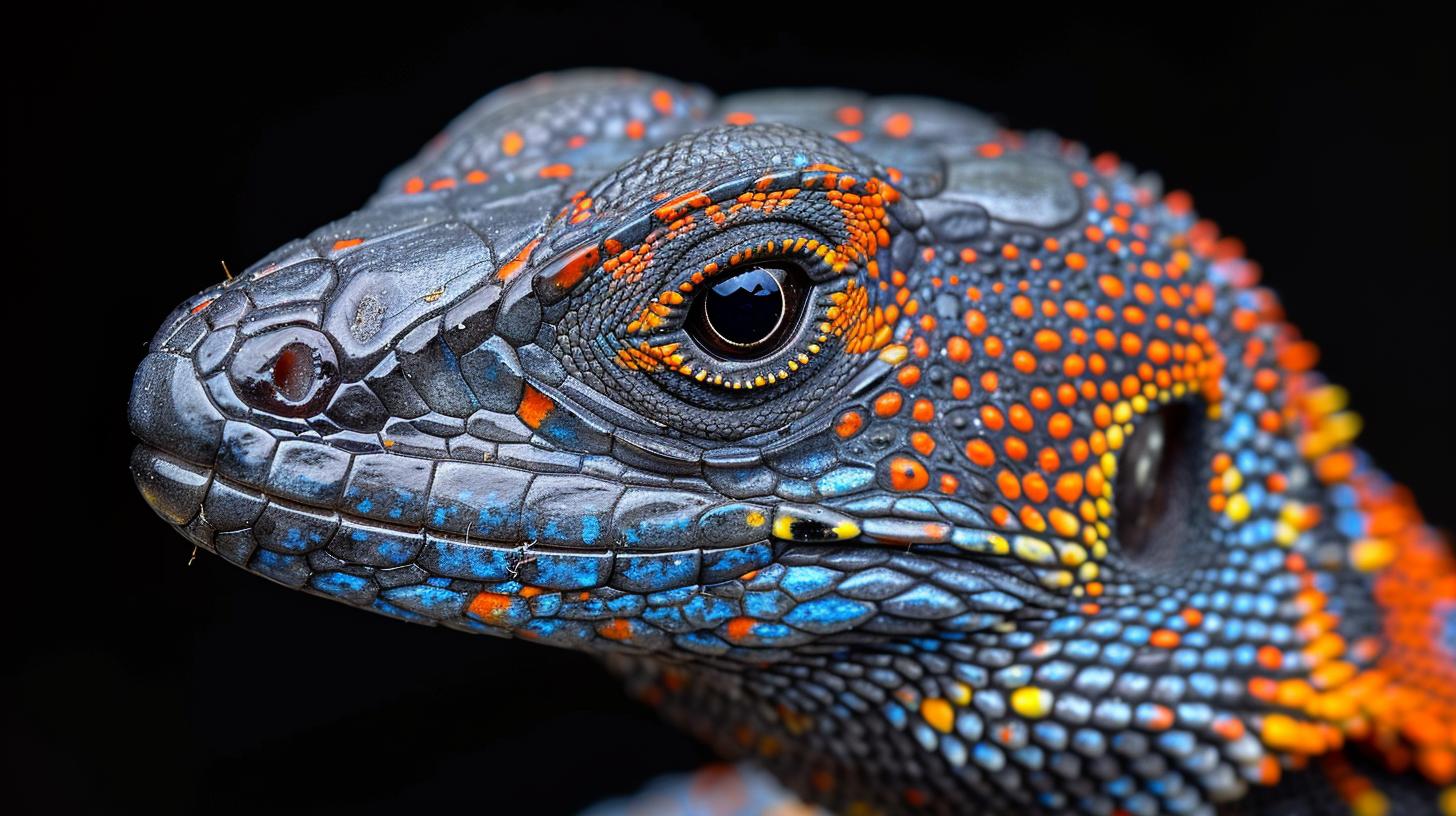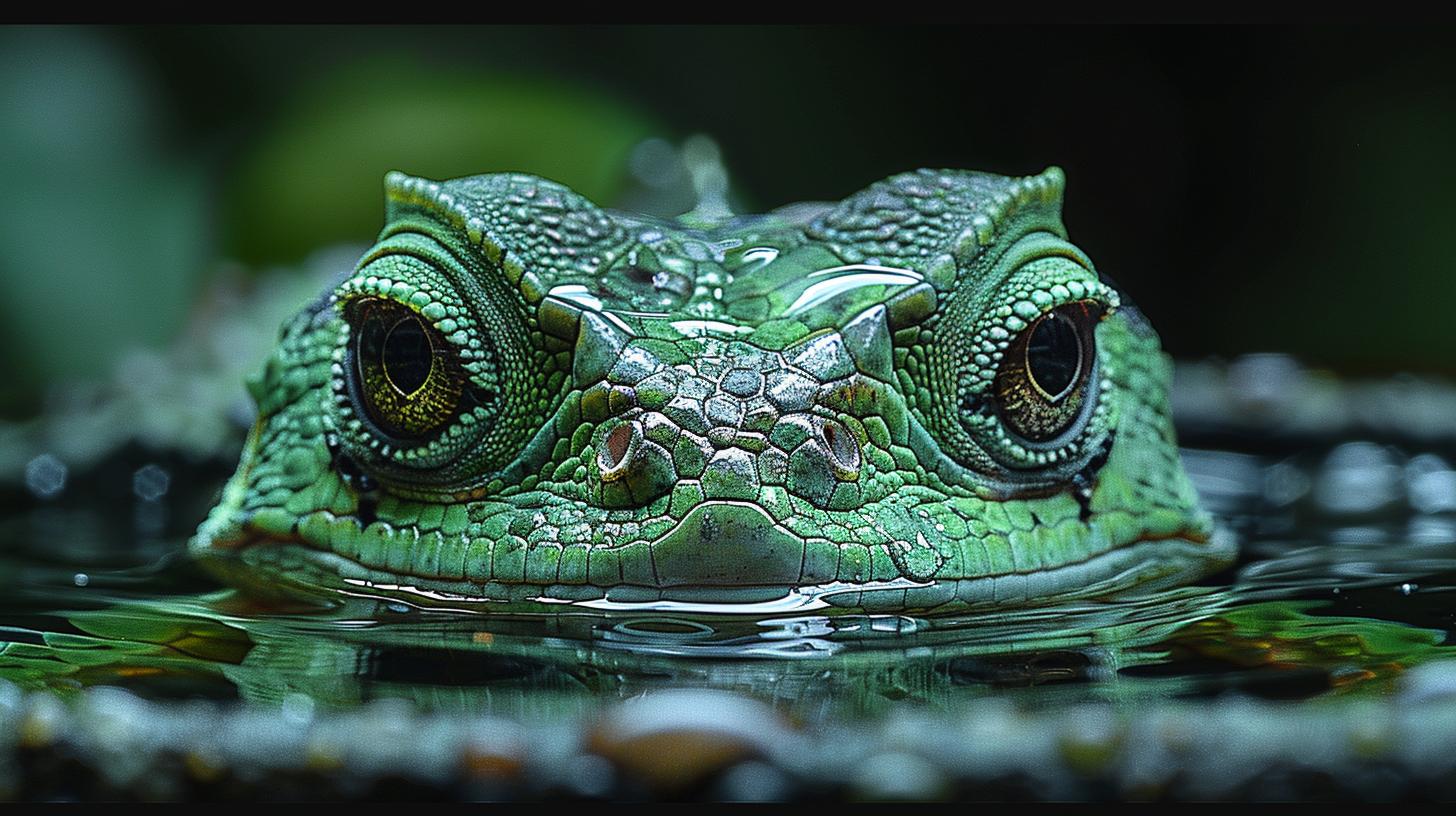Keeping Your Pet Lizard Hydrated: Essential Tips

- Understanding the Importance of Hydration for Lizards
- Recognizing Signs of Dehydration in Your Pet Lizard
- Choosing the Right Water Source
- Lizard Hydration Tips
- The Role of Humidity in Keeping Your Lizard Hydrated
- Monitoring and Adjusting Your Lizard’s Hydration Routine
- Staying Informed and Avoiding Common Mistakes
- Frequently Asked Questions
Understanding the Importance of Hydration for Lizards
Ensuring your pet lizard stays adequately hydrated is not just a good practice-it's an essential aspect of their care that directly influences their well-being and vitality. A focus on lizard hydration tips at the onset can save you from countless worries and ensures that your beloved reptile thrives under your guardianship.
Hydration in reptiles, unlike in mammals, has unique considerations due to their different physiological needs and environmental adaptations. Understanding this critical care facet enables pet owners to maintain their lizard's health and activity levels optimally.
Hydration isn't merely about providing water; it involves a comprehensive understanding of how water intake affects a lizard's overall health. For these cold-blooded animals, hydration supports not just their survival but also plays a pivotal role in digestion, circulation, and skin shedding processes.
Lack of adequate hydration can lead to severe health issues ranging from lethargy and poor digestion to more significant risks like kidney failure. This section examines the multifaceted impact of proper hydration on lizards and underscores why it should be a paramount concern for any responsible pet owner.
Recognizing signs of dehydration early is crucial in preventing potential health complications for your pet lizard. While some signs might be subtle, being vigilant about changes in behavior or appearance can help identify problems before they escalate. Dehydrated lizards may show various indicators such as sunken eyes, lethargy, loss of appetite, or even wrinkled skin.
Knowing when these symptoms warrant a visit to the vet is vital for the timely intervention that could save your pet's life. This proactive approach to monitoring and understanding dehydration symptoms ensures that lizards receive the care they need without delay.
Recognizing Signs of Dehydration in Your Pet Lizard
Understanding the subtle signs of dehydration in pet lizards is crucial for their well-being and longevity. Unlike other pets, lizards often do not show clear signs of distress until they are severely dehydrated, making early detection vital to prevent serious health issues.
Hydration plays a fundamental role in the metabolic processes of reptiles, affecting their digestion, skin health, and overall vitality. As such, recognizing the early indicators of dehydration can help pet owners take immediate action to rectify the problem.
Dehydration in lizards can stem from various factors including inadequate water supply, incorrect humidity levels within their habitat, or an illness that prevents them from drinking normally. Given these complexities, it's imperative for lizard owners to be vigilant and informed about what symptoms to lookout for. This proactive approach ensures that any underlying issues are addressed promptly before becoming critical.
Common Indicators of Dehydration
The most overt signs of dehydration in lizards include sunken eyes and dry, wrinkly skin that displays a lack of elasticity when gently pinched. Additionally, if your lizard's droppings appear unusually dry or if it demonstrates difficulty swallowing food, these could also signal inadequate hydration levels. Lethargy and a diminished appetite are further indications that should prompt concern and closer observation.
When to Seek Veterinary Assistance
If you notice any persistent dehydration symptoms despite efforts to increase water intake through lizard hydration tips, seeking veterinary assistance becomes essential. A professional assessment can reveal whether the dehydration is due to environmental factors or if there's an underlying health issue requiring specialized treatment. In some cases, veterinarians may administer subcutaneous fluids to quickly rehydrate your pet or suggest alterations in diet or husbandry practices tailored specifically towards improving hydration status.
Early intervention plays a key role in preventing dehydration from escalating into more severe conditions such as kidney failure or life-threatening metabolic disturbances. By familiarizing oneself with these warning signs and knowing when professional advice is needed, lizard owners can ensure their pets remain healthy, hydrated, and active for years to come.
Choosing the Right Water Source
In the realm of reptile care, ensuring that your pet lizard remains adequately hydrated is tantamount to maintaining its overall health and vitality. As we delve into Choosing the Right Water Source, it's crucial to understand that not all water is created equal, especially when it comes to the sensitive systems of these cold-blooded creatures.
The decision between purified versus tap water, along with the method of delivery-be it through water dishes or automated misting systems-can have significant impacts on their hydration levels.
The quality of water provided to lizards can greatly influence their ability to stay hydrated and healthy. While tap water is readily available, it often contains chlorine and other chemicals which may not be ideal for your pet's consumption.
On the other hand, purified water undergoes a filtration process that removes these potentially harmful substances, making it a safer choice for sensitive reptilian systems. This section seeks to explore these options in detail, providing insights into the benefits of each and helping you make an informed decision for your scaly friend.
Purified vs. Tap Water for Lizards
When considering purified vs. tap water for lizards, several factors come into play. Purified water offers a level of safety by eliminating chlorine, chloramines, and heavy metals that are commonly found in tap water.
These substances can be detrimental to a lizard's health if ingested over time, leading to potential health issues or even impacting their delicate skin during soaking sessions. Opting for purified or distilled water can offer peace of mind knowing that you're providing the safest hydration option available.
However, it's also important to recognize that using purified water exclusively may require additional steps in ensuring your lizard receives necessary minerals that would otherwise be found in natural water sources. Some reptile owners choose to add specific reptile-safe supplements to the purified water to compensate for this loss.
Water Dishes vs Automated Misting Systems
Lizard hydration tips often emphasize not just what they drink but how they drink as well. Simple water dishes provide an accessible source of hydration; however, they must be kept clean and filled with fresh water regularly to prevent bacterial growth and ensure safety for your pet lizard. On the other hand, automated misting systems create a more natural drinking experience by simulating raindrops from which many lizards prefer to drink directly off plants' leaves within their habitat.

Furthermore, automated misting systems contribute significantly towards maintaining optimal humidity levels within the enclosure-another critical aspect of keeping lizards hydrated effectively (this will be discussed further in another section). Although more expensive than traditional dishes, such systems offer convenience and promote better health through environmental enrichment and encouragement of natural behaviors like licking droplets from surfaces.
Adopting either one or combining both methods based on your lizard's species-specific needs allows you more flexibility in ensuring they remain well-hydrated throughout their life under your care. Understanding these distinctions not only improves your ability as a caregiver but enriches the quality of life for your cherished reptilian companion substantially.
Lizard Hydration Tips
Encouraging your pet lizard to stay hydrated might seem like a simple task, yet it can often be more challenging than anticipated. Understanding the natural behaviors and preferences of lizards can significantly enhance the effectiveness of your hydration strategies. Lizard hydration tips are not just about providing water; they're about making water appealing and accessible.
Firstly, positioning water sources for easy access is crucial. Lizards, being creatures of habit, will often return to familiar spots within their enclosure for drinking. Placing shallow water dishes in these areas can encourage regular drinking habits.
However, not all lizards recognize standing water as a source of hydration. For species accustomed to licking dew drops or rainfall from leaves, incorporating an automated misting system or manually spraying parts of the enclosure can mimic this natural environment, promoting hydration through their instinctual behaviors.
Incorporating hydrating foods into your lizard's diet offers another method to boost fluid intake indirectly. Many fruits and vegetables have high water content that can significantly contribute to overall hydration. Here's a list of hydrating foods suitable for most lizards:
- Sliced cucumbers
- Watermelon pieces (with caution due to sugar content)
- Leafy greens like romaine lettuce and collard greens
- Zucchini slices
- Bell pepper pieces
Remember, while these foods provide moisture, they should complement a balanced diet tailored to your specific type of lizard rather than replace it entirely.
Transitioning now into the role humidity plays in lizard hydration highlights an often-overlooked aspect of care. Although offering direct sources of water is essential, maintaining optimal humidity levels within the enclosure ensures that your pet does not lose excessive body moisture through respiration or skin evaporation. Each species requires its unique humidity conditions mimicking their natural habitats-ranging from arid desert environments to tropical rainforests.
By harnessing these strategies-thoughtful placement of water sources, integrating hydrating foods into diets, and monitoring enclosure humidity-owners can create a comprehensive approach towards ensuring their lizards remain well-hydrated without resorting to unnatural or stressful methods. This tailored approach not only promotes health but also deepens the bond between pets and their owners by aligning care practices with the innate needs of these fascinating creatures.
As we move towards discussing how humidity affects hydration further in detail, keep in mind that adapting these methods based on individual species' requirements remains key to maintaining healthy hydration levels in pet lizards.
The Role of Humidity in Keeping Your Lizard Hydrated
Understanding the intricate relationship between humidity and hydration in lizards is vital for maintaining their well-being. Lizards, as ectothermic creatures, rely heavily on their environment to regulate body temperature and moisture levels. The right humidity level plays a critical role in ensuring they remain hydrated, healthy, and active.
Different species of lizards hail from a variety of climates ranging from arid deserts to tropical rainforests, meaning their humidity needs can significantly differ. Hence, identifying the optimal humidity range for your specific lizard species is the first step in creating an ideal habitat.
To maintain appropriate humidity levels, various tools such as humidifiers, misting systems, or simply placing water bowls inside the enclosure can be employed. However, one must be mindful that too much humidity can lead to mold growth and respiratory issues in lizards, while too little can cause dehydration and shedding problems. Here are some effective methods to help monitor and adjust the humidity within a lizard's environment:
- Hygrometers: These devices measure the humidity level inside the enclosure, providing real-time data that can help you make necessary adjustments.
- Automatic misting systems: For those who own tropical species requiring high humidity levels, automated misting systems can provide regular bursts of moisture throughout the day.
- Manual misting: If automatic systems are not an option, manually spraying water into the air within the enclosure using a clean spray bottle can also increase humidity.
Moreover, incorporating hydrating foods into your lizard's diet is another way to boost moisture intake directly. Vegetables with high water content such as cucumbers or leafy greens not only provide hydration but also essential nutrients. This method should complement regular water offerings rather than replace them entirely.
As we continue to explore the nuances of lizard hydration tips, remembering that balanced hydration involves both direct water intake through drinking and indirect absorption via environmental humidity becomes clear. Monitoring these aspects closely ensures your pet thrives under your care. In our journey towards achieving optimal hydration for our scaled companions, understanding their unique needs helps us avoid common mistakes-like overlooking signs of discomfort due to improper humidity levels-and fosters a healthier life for them.

This exploration into ensuring adequate hydration through proper environmental management leads us naturally into discussing specific strategies for monitoring and adjusting your lizard's hydration routine effectively in various conditions.
Monitoring and Adjusting Your Lizard’s Hydration Routine
Ensuring your pet lizard remains adequately hydrated involves more than just providing a bowl of water; it requires ongoing observation and occasional adjustments to their hydration routine. The need for such adjustments arises from the fact that each lizard has unique needs based on its species, age, health condition, and even the time of year. Recognizing when alterations are necessary and implementing them effectively can significantly impact your reptile's overall wellbeing.
Monitoring your lizard's hydration involves regularly checking both the water supply and the lizard itself for signs of sufficient hydration. Observing how often your lizard drinks, assessing the moisture of its habitat, and being alert to any changes in behavior that could indicate dehydration are all part of this process.
Beyond visual checks, keeping track of weight with a precise scale can help since sudden weight loss may be a sign of dehydration. The trick lies in balancing these observations with knowledge about what is normal for your particular specie of lizard since what signifies dehydration in one may be standard in another.
Adjustments to your lizard's hydration plan might include changing the type or location of water sources within its environment. For instance, some lizards might prefer drinking from moving water sources rather than stagnant ones, leading owners to consider installing a filtration system that creates gentle water flow.
Alternatively, incorporating lizard hydration tips such as misting systems or humidity control devices can improve conditions in habitats where direct drinking is less common. Offering hydrating foods like fruits and vegetables that hold a lot of water can also contribute positively to their intake levels without requiring them to drink more frequently.
Making these monitoring practices routine ensures not just survival but thriving health for pet lizards by preventing problems related to dehydration before they arise. Since each change could affect your lizard differently based on numerous factors like stress levels or existing health issues, adjustments should be made gradually and with careful consideration for their individual needs and behaviors.
This proactive approach allows pet owners to create a tailored hydration care plan that supports their pet's specific requirements throughout different stages of their life.
Staying Informed and Avoiding Common Mistakes
In wrapping up our discussion on maintaining optimal hydration for your treasured pet lizard, we've navigated through the essentials-from recognizing dehydration symptoms to the significant role humidity plays in their health. This journey underscores the importance of being vigilant and proactive in ensuring our scaly friends thrive under our care.
Implementing effective lizard hydration tips isn't just about providing water; it's about creating an environment that mirrors their natural habitat as closely as possible, reinforcing the foundation for a healthy, vibrant life.
Staying informed and vigilantly avoiding common mistakes are pivotal steps toward achieving this goal. Misconceptions can lead to poor hydration practices, inadvertently causing stress or health issues for your pet. Regularly consulting with veterinarians and leveraging reputable resources will empower you to tailor a hydration routine that aligns with the unique needs and behaviors of your lizard, thereby fortifying its wellbeing. By embracing these strategies, you actively contribute to crafting a nurturing space where your reptilian companion can flourish.
We invite you to continue enriching your knowledge base by browsing our extensive collection of articles on pet care and wellness. Whether you're a seasoned lizard owner or new to the realm of reptilian companionship, there's always more to learn about nurturing these fascinating creatures. Dive into our resources today for more invaluable insights and guidance-your pathway to becoming an even more adept and informed pet owner awaits.
Frequently Asked Questions
How Do You Rehydrate a Lizard?
Rehydrating a lizard involves providing it with frequent access to water and maintaining an appropriate humidity level in its habitat. Gradual misting can help, especially for species that prefer drinking water droplets off surfaces rather than from a bowl.
Soaking the lizard in shallow, warm water for up to 30 minutes several times a week can also promote hydration and stimulate drinking behavior.
How Do You Give Lizards Water?
To give lizards water effectively, place a shallow dish of fresh water in their enclosure, ensuring it is large enough for the lizard to drink from but shallow enough to prevent drowning risks. For some species, misting the enclosure with water helps as they lick droplets off leaves and surfaces.
Regularly changing the water and keeping the dish clean are crucial steps.
How Do You Know if a Lizard Is Thirsty?
Signs that a lizard may be thirsty or dehydrated include sunken eyes, loss of skin elasticity (skin does not quickly return to normal when gently pinched), lethargy, and reduced appetite. Dehydrated lizards might also spend more time than usual near their water source or appear eager to drink when offered.
What Is the Fastest Way to Hydrate a Bearded Dragon?
The fastest way to hydrate a bearded dragon is by offering it warm soaks in shallow water for about 15-20 minutes under supervision several times a week. During this time, bearded dragons often drink vigorously. Additionally, misting their food with water or offering moisture-rich vegetables can further aid hydration.
How Long Does It Take a Lizard to Recover From Dehydration?
Recovery time from dehydration depends on the severity of the condition and how quickly treatment begins. Some lizards may show improvements within hours of being offered proper hydration through direct drinking or assisted methods like soaking in shallow water baths; however, full recovery could take several days to weeks depending on individual health conditions and care provided.
Can Lizards Drink Pedialyte?
While Pedialyte is often used as an emergency hydration aid for pets due to its electrolyte content, caution should be taken before giving it to lizards without consultation from a veterinarian specialized in reptiles.
If approved by a vet, diluting Pedialyte with equal parts of water before offering small amounts can sometimes help rehydrate dehydrated lizards temporarily until professional treatment is possible.
Leave a Reply
You must be logged in to post a comment.